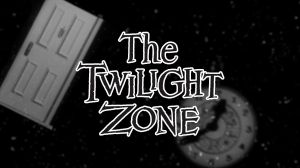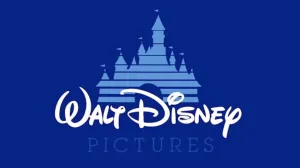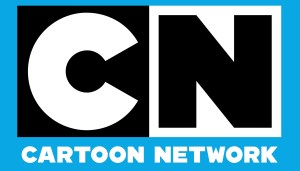
Marvel Comics #1000 is an endurance test of a comic book. Not only does it deliver more than 80 pages of story, those 80 pages are crafted by artists from across the entire spectrum of modern superhero comics so that each displays a unique narrative, style, and tone. There is a page for every year of Marvel’s existence, in one form or another, beginning in 1939 and each page is emblazoned with its year and a single factoid (ranging from the essential to the ephemeral). Reading it in a single sitting requires more than an hour of focus and at least some small degree of interest in flipping back and forth to connect the dots of a grander narrative embedded within so very many homages, callbacks, love letters, and gags. Ordinarily, a comic like this would eventually feel like a chore to read—it could easily have become a tedious retreading of chronological history like the current History of the Marvel Universe—so it’s a testament to the craftsmanship, design, and joy on display in Marvel Comics #1000 that it continues to deliver an enjoyable reverie from cover to cover.
Videos by ComicBook.com
Marvel Comics #1000 reads in two different fashions: as the origin story of a powerful new artifact, the Eternity Mask, and a celebration through anthology. The former fashion provides both a throughline that encourages readers to keep going, rather than savor only a few pages at a time. While the premise of a secret history and powerful secrets found here feels like old hat after decades of similar tales, Al Ewing (the “mastermind” of this issue) provides the Eternity Mask with a narratively-intriguing twist bound to deliver some excellent future stories. He also infuses it with some of the most easily forgotten elements in Golden Age Marvel Comics lore, offering a meta-commentary on how continuity imbues everything in superhero comics like these with potential, even decades after they’ve been forgotten. This also provides some much needed highlights for the first couple of decades of history before the arrival of Fantastic Four #1 and modern Marvel storytelling in 1961.
Where Ewing’s overarching narrative isn’t found in those early years, a great deal of cleverness is applied to make connections with the present. These pages note the introduction of other genre fare, including romance, science-fiction, and westerns, then tie them into more recognizable characters. These sorts of unexpected twists on each date continue throughout the anthology. They provide an important rotation of approaches that prevent readers from fatiguing too soon. While some moments can be read as self-indulgent—a story about how Spider-Man visits the locations where many of his loved ones died every single night is the worst example—most take stabs at jovial self-awareness or the simple evocation of grand moments or themes. Straczynski admitting his greatest regret and Mary Jane explaining an iconic panel are excellent examples, respectively.
It’s only in the 1960s that the issue is temporarily overtaken by moments too significant to go unacknowledged. These moments also help to frame Marvel Comics #1000 from the publishers current place in history. Iron Man, Captain America, and Black Panther are all first appearances not guaranteed to be included if this comic were published 15 years ago. Today they are essential to how Marvel is seen by the world and they all receive artistic send ups worthy of their legacies on popular culture.
It’s difficult to encompass how broad and impressive the assembled artistic talent on display here really is. While individual appreciation of various artist’s styles and approaches will vary, there is no debating that this volume collects many of the most influential and critically-acclaimed creators of many generations. These creators reflect more than variations on style, they also embrace a wide array of storytelling methods, including close-cropped grids, mind-blowing splashes, and multi-dimensional pages that break the fourth wall. It is this visual variation that makes the issue a compulsive read.
Reflecting on the credits for Marvel Comics #1000, long lists in small fonts that span two entire pages, another unavoidable element of meta-commentary emerges. The diversity of creators present here is a vast improvement upon Marvel Comics’ hiring throughout most of the years displayed, but it is still not equal to the celebration of many firsts and changes throughout the comic itself. Kelly Sue DeConnick, Rainbow Rowell, and Eve Ewing plot three of the absolute best pages in the entire issue, but they are all part of a generation that is just beginning to make the creators behind superheroes reflect the sprawling fandoms who love these characters.In their stories and the work of many others found here there is a lot of hope to be found for the future of Marvel Comics, but it’s a future that is still yet to be written. That only 17 of the 189 core creators (i.e. writers, artists, colorists, and letterers) are women is nothing short of embarrassing.
Discussions of diversity (on and off the page), the evolving cultural status of Marvel, and the artistic variety of modern superhero comics are only some of the ideas that arise from this well-cultivated collection of single-page stories. Ewing provides an enjoyable plot that offers a clear narrative cohesion, but the accidental commentary of Marvel Comics #1000 is even more potent. While it is purely celebratory in nature, with even the self-deprecating jokes failing to acknowledge anything worse than a poor plot twist, this anthology cannot help but comment on the culture and history that have shaped Marvel into what it is in 2019. There is plenty of excellent discussion to be had in parsing how the history of both the publisher and its many, many contributors are retold today. The legends of foundational figures like Jack Kirby, Steve Ditko, and Stan Lee loom large, as do the future films and stories they would help inspire. Even with so many heady considerations, Marvel Comics #1000 is a tremendously fun read—a testament to the longevity and influence of superhero comics. Excelsior!
Published by Marvel Comics
On August 28, 2019
Created by Various
Editor’s Note: Due to the number of contributors participating in the creation of Marvel Comics #1000 it was not feasible to follow our standard crediting guidelines. It also felt unfair to highlight the participation of only a few creators when so many writers, artists, colorists, letterers, editors, and more were integral to the comic. In lieu of only providing a spotlight for a few, we have elected to allow the credits listed within Marvel Comics #1000 speak for themselves.








